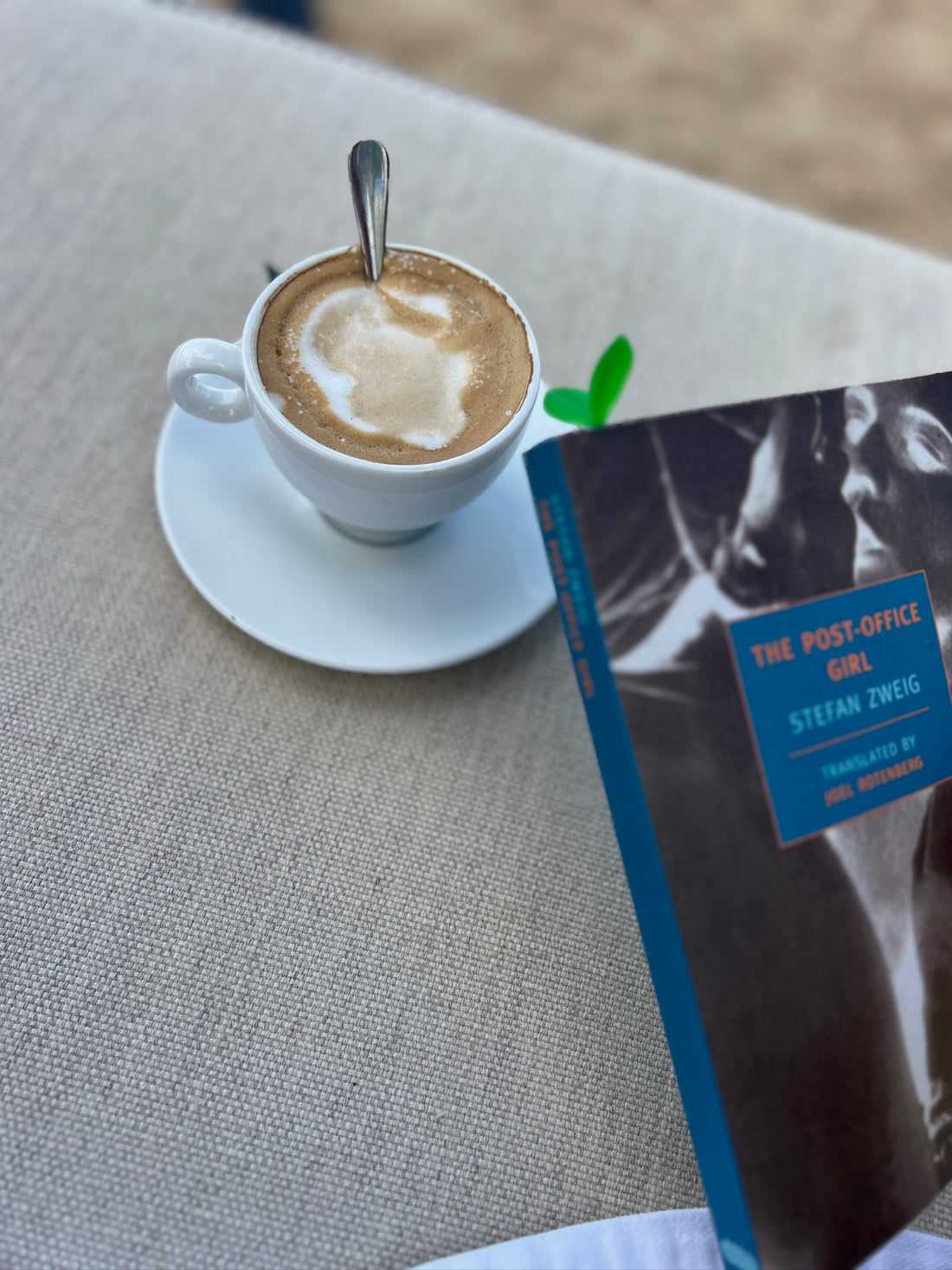
The Post Office Girl by Stefan Zweig
Share
the Post office girl is a hidden gem in literature, it offers a poignant look at the human desire for a better life. Even though published long after Zweig's death, the novel captures the emotional struggles of a young woman trapped in a world of poverty and hopelessness.
we are introduced to Christine Hoflehner, a young woman stuck in a dull and draining job at a tiny post office in rural Austria. It’s the 1920s, and Europe is still reeling from World War I. Christine’s life is a monotonous cycle, with no room for joy or dreams—just the daily grind in a village that time seems to have forgotten.
Everything changes when Christine’s wealthy aunt invites her to a luxurious holiday in Switzerland. Suddenly, Christine is thrust into a world of glamour and excitement, where she’s treated to the finer things in life. For the first time, she feels truly alive, filled with hope and the thrill of possibilities. But this joy is fleeting. As quickly as it comes, it slips away, leaving Christine to return to her bleak reality, now with the painful awareness of what she’s missing.
The author paints a vivid picture of Christine’s world, showing how poverty can crush the human spirit. The novel contrasts her dreary existence with the brief, dazzling escape to a life of luxury. But Zweig doesn’t offer easy solutions. Instead, he explores the emotional toll of these experiences, highlighting how a taste of something better can leave one feeling even more lost and disillusioned.
Zweig’s portrayal is both empathetic and critical, showing the deep divides in post-war Europe while focusing on the individual’s emotional journey. Christine’s story is a reminder of how poverty isn’t just about lacking money; it’s about being trapped in a life where dreams seem impossible.
What makes this book so compelling is Zweig’s ability to go deep into Christine’s emotions. He captures her transformation—from a weary, invisible figure to someone who briefly experiences joy and hope, and then to a person painfully aware of what she can never have. The novel is structured to reflect this journey, starting slowly with Christine’s awakening and then speeding up as her world crumbles.
this is a timeless tale that still resonates today. It speaks to the universal desire for a better life and the harsh realities that can stand in the way. It is a powerful reminder of the fragility of happiness and the resilience needed to face life’s disappointments. Through Christine, we see how hope can be both a blessing and a burden, making this story as relevant now as it was nearly a century ago.
we are introduced to Christine Hoflehner, a young woman stuck in a dull and draining job at a tiny post office in rural Austria. It’s the 1920s, and Europe is still reeling from World War I. Christine’s life is a monotonous cycle, with no room for joy or dreams—just the daily grind in a village that time seems to have forgotten.
Everything changes when Christine’s wealthy aunt invites her to a luxurious holiday in Switzerland. Suddenly, Christine is thrust into a world of glamour and excitement, where she’s treated to the finer things in life. For the first time, she feels truly alive, filled with hope and the thrill of possibilities. But this joy is fleeting. As quickly as it comes, it slips away, leaving Christine to return to her bleak reality, now with the painful awareness of what she’s missing.
The author paints a vivid picture of Christine’s world, showing how poverty can crush the human spirit. The novel contrasts her dreary existence with the brief, dazzling escape to a life of luxury. But Zweig doesn’t offer easy solutions. Instead, he explores the emotional toll of these experiences, highlighting how a taste of something better can leave one feeling even more lost and disillusioned.
Zweig’s portrayal is both empathetic and critical, showing the deep divides in post-war Europe while focusing on the individual’s emotional journey. Christine’s story is a reminder of how poverty isn’t just about lacking money; it’s about being trapped in a life where dreams seem impossible.
What makes this book so compelling is Zweig’s ability to go deep into Christine’s emotions. He captures her transformation—from a weary, invisible figure to someone who briefly experiences joy and hope, and then to a person painfully aware of what she can never have. The novel is structured to reflect this journey, starting slowly with Christine’s awakening and then speeding up as her world crumbles.
this is a timeless tale that still resonates today. It speaks to the universal desire for a better life and the harsh realities that can stand in the way. It is a powerful reminder of the fragility of happiness and the resilience needed to face life’s disappointments. Through Christine, we see how hope can be both a blessing and a burden, making this story as relevant now as it was nearly a century ago.
